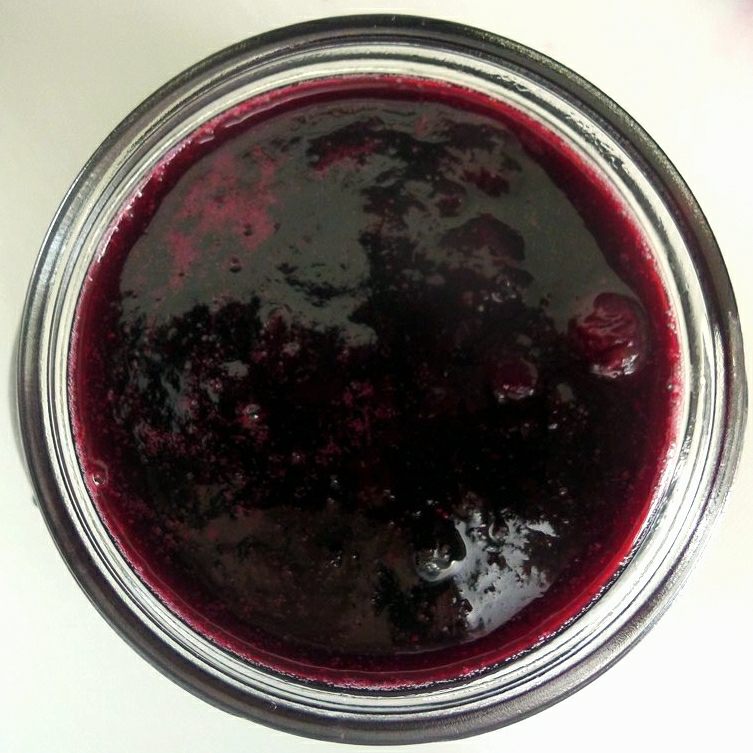The Disturbing Fate of a Planet Made of Blueberries
You’ll never look at blueberry jam the same way again.

Anders Sandberg, of Oxford’s Future of Humanity Institute, describes himself as an “academic jack-of-all-trades,” and on arXiv.org, a gathering place for pre-prints of academic papers, his contributions include work on risk estimates, supersized machines, neck tie-knots, the Fermi paradox, and the energy required to run a brain as compared to the energy required to run artificial intelligence.
His latest work is a disturbing thought experiment that ensures that anyone who reads it will never look at a blueberry pie the same way again.
Sandberg is a user of Physics Stack Exchange, where anyone can ask a physics-related question and hope for an answer. One user, Billy-bodega, asked the following:

Supposing that the entire Earth was instantaneously replaced with an equal volume of closely packed, but uncompressed blueberries, what would happen from the perspective of a person on the surface?
And Sandberg, eschewing the usual can’t-be-bothered attitude of Physics Stack Exchange towards such whimsical questions, decided to give the question serious consideration. “The end result,” he writes, “is a world that has a steam atmosphere covering an ocean of jam on top of warm blueberry granita.”

Sandberg grew up in Sweden, where smaller, thin-skinned blueberries grow wild, and he has “very fond memories of exploring the forest and gorging myself as a kid.” But he loved the blueberry question not because of his childhood affinity, but because it immediately got him thinking about sphere packing (a deep issue in physics and math), elasticity, and complex substances. (A planet of blueberries is a more interesting problem than a planet of gold.)
“I like crazy-sounding questions that make me think in the next moment, ‘Hey! I could actually calculate this!’” he says. “Many good physics questions involve taking something everyday and pushing it to the extreme—what if the speed of light was really slow, or we tried to build the maximally tall tower?”
This process of imagining blueberry earth begins with fat, thick-skinned highbush blueberries (the kind you find in grocery stores, not in the blueberry barrens of Maine). Given the estimated density of blueberries, the mass of an Earth made of berries would be a fraction of its current mass, with weaker gravity. Blueberries, Sandberg points out, are not particularly strong, able to resist the weight of a sugar cube but not a milk carton. Within a few yards of the surface of whole blueberries, the force of gravity would pulp the blueberries into mash, releasing the air that had separated each berry from its neighbors and shrinking the planet to a smaller radius. If no other forces were involved, the blueberry planet would collapse under its own weight in an estimated 42 minutes.
But there are other factors at play. The air released by the pulping of berries would create a thick, dense atmosphere, which Sandberg compares to Titan’s. Little light would filter through to the surface, so the dramatic events that followed would happen in almost total darkness.

The air released from the pulp would burst to the surface “as bubbles and jets, producing spectacular geysers (especially since the gravity is low),” Sandberg writes. At the same time, the compaction of the earth would release enormous amounts of energy, heating blueberry earth into “a roaring ocean of boiling jam, with the geysers of released air and steam likely ejecting at least a few berries into orbit.”
Deep under this ocean of jam, though, the pressure would change the dynamics. Even if it’s hot, the conditions would compress the jam into ice, most likely “some kind of composite pulp ice.” Meanwhile, the Moon would have long since fled the scene. In the end, Sandberg finds, the Earth will be akin to one of the oceanic exoplanets discovered elsewhere in the universe—a place where no human would want to live (but could perhaps be a resource for future space mining companies in search of ready-made jam products).
This process isn’t entirely unique to blueberries. It would play out in similar fashion for other fruit. “I have been asked about bananas,” he says—there’s a question about how potassium-40 decay would contribute to geothermal heating over time—“and watermelons, but nearly all behave the same way.”
There are still open questions to answer about blueberry earth. How would the chemistry of blueberry pulp play into these dynamics? Long-term, the planet could dry out, so what would that mean for the oceans? How bad are hurricanes on the planet?
Sandberg says he would visit the jammy planet he imagined—“With protective gear. And probably a supply of ice cream.” Which brings us to another question raised on Physics Stack Exchange, one that caught his eye: What material is best suited for eating ice cream from, without the ice cream melting too fast on the edges? (Would diamond bowls be good for delicious ice cream?) He was also intrigued by a question about how Venus flytraps count and another about how diffraction patterns would change if atoms were triangular instead of spherical. And of course there’s always the classic: What if the Moon were actually made of cheese?
Gastro Obscura covers the world’s most wondrous food and drink.
Sign up for our regular newsletter.


























Follow us on Twitter to get the latest on the world's hidden wonders.
Like us on Facebook to get the latest on the world's hidden wonders.
Follow us on Twitter Like us on Facebook